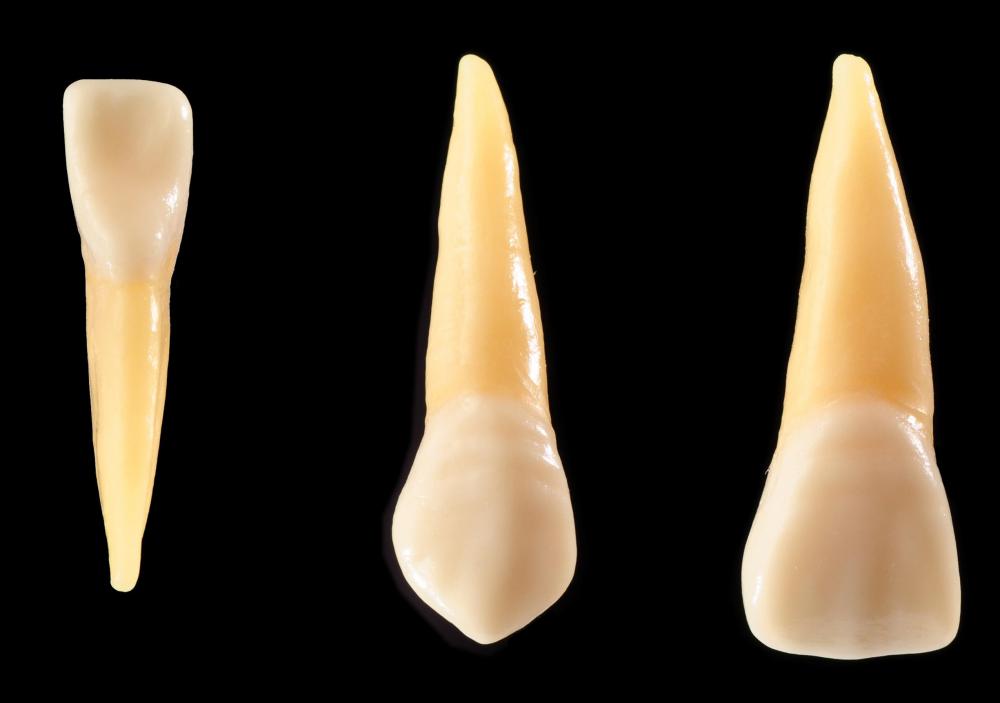At TheHealthBoard, we're committed to delivering accurate, trustworthy information. Our expert-authored content is rigorously fact-checked and sourced from credible authorities. Discover how we uphold the highest standards in providing you with reliable knowledge.
What Is Calcium Hydroxyapatite?
Calcium hydroxyapatite, or simply hydroxyapatite, is a mineral that belongs to a group of phosphate minerals known as apatites. It is usually identified with the teeth and bones of humans. In fact, this mineral is a major component of these structures.
Although calcium and phosphate are two of the major elements that compose calcium hydroxyapatite, a third element is hydroxide. This consists of a hydrogen atom joined with oxygen in a chemical bonding that involves sharing electrons with each other. It is the hydrogen atom that gives this mineral its distinctiveness within the apatite group. For example, other apatites such as fluorapatite or chlorapatite can be formed if hydrogen is replaced by fluoride or chloride, respectively.

Calcium hydroxyapatite is known to make up to 50 percent of the bones in the human anatomy. Here, it functions as an inorganic compound called bone mineral, or bone apatite. In teeth, the hydroxyapatite can be found in the enamel and the calcified dentin that it covers; these are two of the teeth’s four major tissues. That found in bones and teeth have a crystallized form that lends to the rigidity of these structures. In fact, it contributes to enamel being the strongest and most mineralized component of the human body.

Thus, lack of calcium hydroxyapatite, or calcium, can lead to the development of certain diseases. One prime example is osteoporosis, in which the risk of bone fracture is increased with the loss of bone mineral density (BMD). In hydroxyapatite crystal disease, however, inflammation is caused when crystallized clumps of the mineral accidentally go to the wrong areas of the skeletal system, such as the joints. The inflammation not only affects this area, but surrounding ligaments and tendons as well.

Physicians typically use calcium hydroxyapatite to solve problems concerning the bones of patients. It can be used as an amputated bone replacement. In fact, some medical researchers have suggested that artificial implants made of this substance can be fused to living bone, thus completely restoring the structure’s aesthetic and functional characteristics. This process is known as osseointegration.

Calcium hydroxyapatite has therefore been used to coat bones to encourage the fusion of the bone with the artificial parts. This application is most commonly associated with dental implants and hip replacements. For people suffering from calcium deficiency, particularly people who are at a risk of developing or have osteoporosis, microcrystalline hydroxylapatite (MH) is promoted to slow bone loss. In some quarters, it is considered better than calcium carbonate for this purpose.
AS FEATURED ON:
AS FEATURED ON:















Discuss this Article
Post your comments